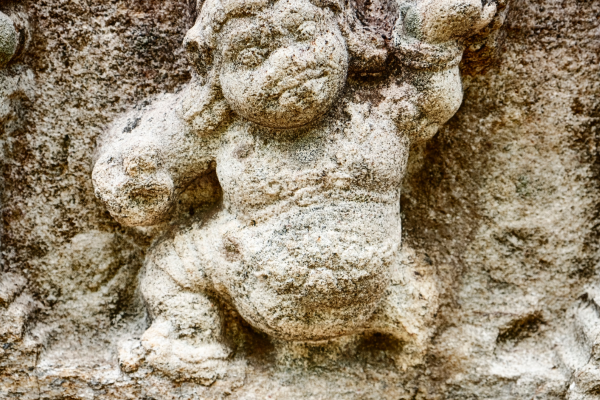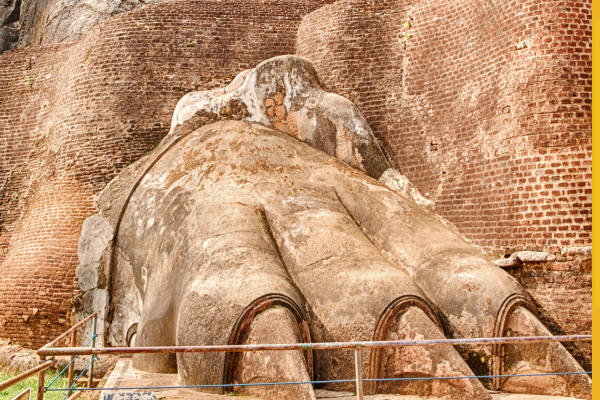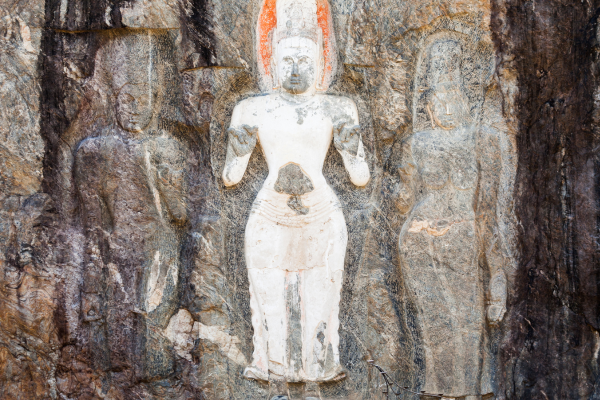The Ancient Art of Weathered Stone Carving in Ceylon – By Bhanuka – eLanka

Ceylon, now known as Sri Lanka, is an island rich in history and cultural heritage. One of its most fascinating artistic traditions is stone carving. Weathered stone carvings in Ceylon offer a glimpse into the island’s ancient civilizations, their artistic achievements, and their cultural and religious beliefs. This article explores the history, techniques, and significance of weathered stone carvings in Ceylon.
Historical Background
Stone carving in Ceylon dates back to the ancient Anuradhapura and Polonnaruwa kingdoms, which flourished between the 3rd century BCE and the 13th century CE. These early civilizations left behind an impressive array of stone monuments, including temples, stupas, and statues, many of which feature intricate carvings.
The influence of Buddhism, which was introduced to the island in the 3rd century BCE, is evident in many of these carvings. Stone artisans created elaborate representations of Buddha, bodhisattvas, and other religious motifs, reflecting the deep spiritual significance of their work.
Notable Sites and Examples
1. Anuradhapura:
- Isurumuniya Temple: Known for its exquisite stone carvings, including the famous “Isurumuniya Lovers,” a beautiful depiction of a couple carved into the rock.
- Mihintale: This site features intricate stone carvings that illustrate Buddhist themes and the daily life of ancient Sri Lankans.
2. Polonnaruwa:
- Gal Vihara: This rock temple is renowned for its massive stone Buddha statues, carved directly into a granite boulder. The weathered surface of these carvings adds to their timeless beauty.
- Rankoth Vehera: The stupa is surrounded by finely carved stone reliefs depicting various religious and mythological scenes.
3. Sigiriya:
- Sigiriya Rock Fortress: The Lion’s Gate, with its gigantic lion paws carved out of the rock, and the frescoes of heavenly maidens found on the rock face are prime examples of the artistic skill of ancient Ceylonese carvers.
Techniques and Styles
The stone carvings of ancient Ceylon were created using a combination of chiseling, engraving, and sculpting. Artisans worked with a variety of tools, including hammerstones, chisels, and metal tools, to achieve the desired level of detail and intricacy. The process was labor-intensive and required great skill and precision.

Weathering Effects:
- The weathering of stone carvings over centuries has added a unique patina, enhancing their aesthetic appeal. Natural elements such as wind, rain, and temperature changes have softened edges and added texture, giving the carvings a timeless and mystical quality.
- In some cases, weathering has revealed hidden layers of artistry, as the erosion of the outer stone surfaces has exposed underlying details.
Cultural and Religious Significance
The stone carvings of Ceylon are not merely artistic expressions but are deeply rooted in the island’s cultural and religious identity. They serve as visual representations of Buddhist teachings, Hindu mythology, and historical narratives.
Buddhist Influence:
- Many stone carvings depict scenes from the life of Buddha, Jataka tales, and symbols such as the lotus flower and the dharma wheel. These carvings were intended to inspire devotion and convey spiritual teachings to the faithful.
- Monastic complexes and temples adorned with intricate stone carvings served as centers of religious activity and pilgrimage, reinforcing the cultural significance of these artistic works.
Hindu Influence:
- Hindu stone carvings, particularly from the later Polonnaruwa period, feature deities such as Shiva, Vishnu, and Ganesha. These carvings highlight the syncretic nature of Ceylon’s religious landscape, where Buddhist and Hindu traditions often coexisted and influenced each other.

Preservation and Challenges
Preserving the weathered stone carvings of Ceylon presents several challenges. Environmental factors, including pollution and climate change, pose a threat to these ancient artworks. Efforts are underway to protect and conserve these cultural treasures through initiatives led by the Sri Lankan government, UNESCO, and other heritage organizations.
Conclusion
The weathered stone carvings of Ceylon are a testament to the island’s rich artistic heritage and the enduring legacy of its ancient civilizations. These carvings offer a window into the spiritual and cultural life of early Sri Lankans, reflecting their beliefs, values, and artistic achievements. As efforts continue to preserve these invaluable artifacts, the weathered stone carvings of Ceylon will remain a source of inspiration and admiration for generations to come







